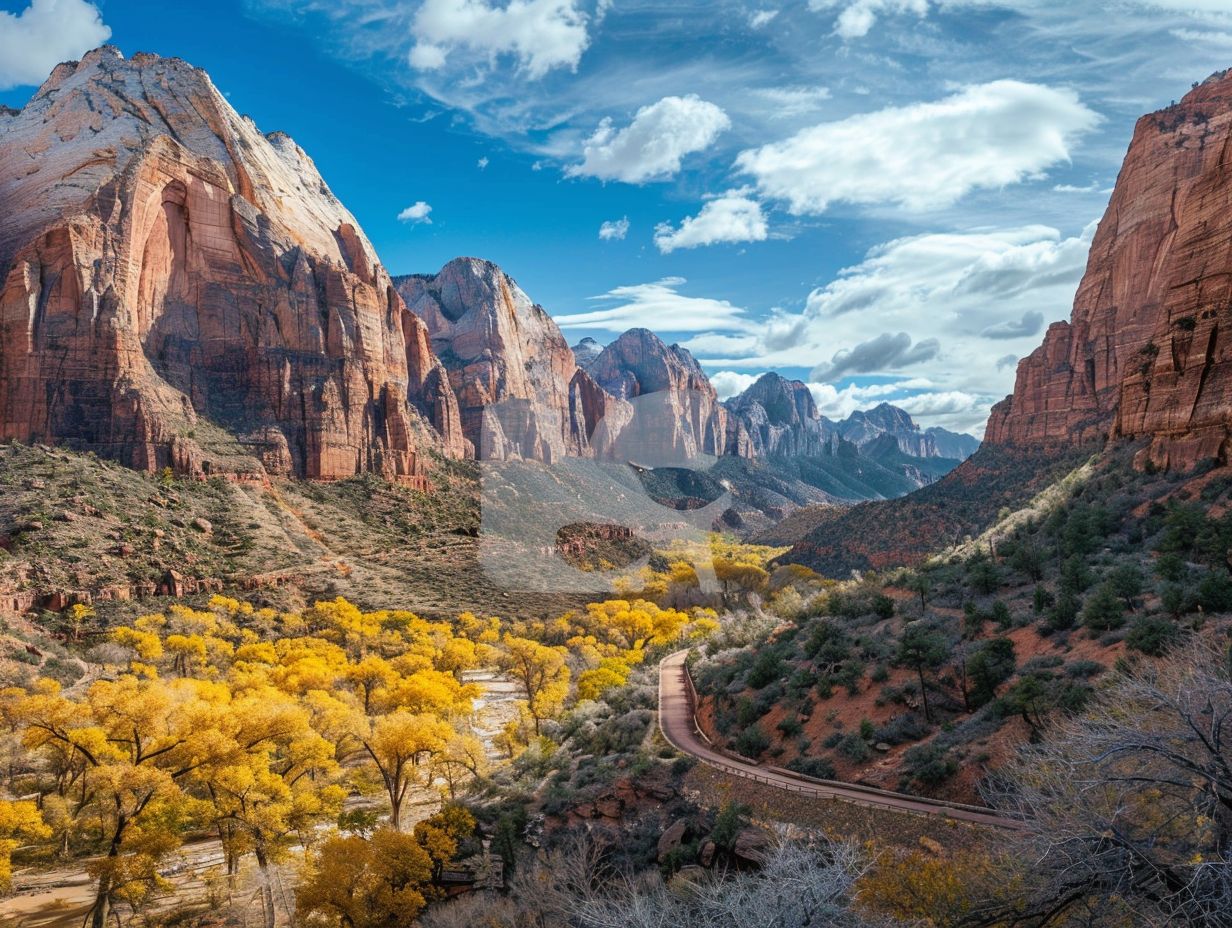Zion National Park, a stunning natural wonder located in southwestern Utah, is a popular destination for outdoor enthusiasts and nature lovers. One of the key factors to consider when planning a visit to Zion is the park’s rainfall patterns, which can significantly impact the overall experience. In this comprehensive guide, we’ll dive into the details of Zion National Park’s rainfall by month, helping you make the most of your visit.
Zion National Park Rainfall by Month
Zion National Park experiences a diverse range of rainfall throughout the year, with some months being significantly wetter than others. Here’s a breakdown of the average rainfall by month:
| Month | Average Rainfall (inches) |
|---|---|
| January | 1.8 |
| February | 2.0 |
| March | 2.0 |
| April | 1.3 |
| May | 0.7 |
| June | 0.3 |
| July | 1.2 |
| August | 1.5 |
| September | 1.0 |
| October | 1.3 |
| November | 1.4 |
| December | 1.6 |
As you can see, the wettest months in Zion National Park are typically February and March, with an average of 2.0 inches of rainfall each. The driest month is June, with an average of just 0.3 inches of rainfall.
Understanding Zion’s Monsoon Season

One of the most notable weather patterns in Zion National Park is the annual monsoon season, which typically runs from July to September. During this time, the park experiences an increase in moisture and thunderstorm activity, which can lead to the potential for flash floods.
Visitors to Zion during the monsoon season should be extra vigilant and stay informed about weather conditions. Park rangers and visitor centers can provide up-to-date information on the risk of flash floods and any necessary safety precautions.
Temperature Variations in Zion National Park
In addition to rainfall, Zion National Park also experiences significant temperature variations throughout the year. The average high temperature ranges from 54°F in January to 100°F in July, while the average low temperature ranges from 30°F in January to 70°F in July.
These temperature fluctuations can have a significant impact on the overall comfort and enjoyment of your visit. Packing appropriate clothing and gear, such as layers, sun protection, and sturdy footwear, is essential for ensuring a comfortable and safe experience in Zion.
Accessing Detailed Weather Data
For those interested in more detailed weather data for Zion National Park, the Western Regional Climate Center (WRCC) provides comprehensive climate summaries for the park. These summaries include information on average total precipitation, snowfall, and other weather-related statistics.
While the link provided in the search results is currently not working, visitors can access the WRCC’s Western U.S. Climate Summaries page directly to find the most up-to-date and accurate information on Zion’s weather patterns.
Conclusion
Zion National Park’s rainfall patterns are a crucial factor to consider when planning a visit to this stunning natural wonder. By understanding the park’s monthly rainfall averages, the potential for flash floods during the monsoon season, and the temperature variations throughout the year, you can better prepare for a safe and enjoyable experience in Zion.
Remember to stay informed, pack appropriately, and follow the guidance of park rangers and visitor centers to make the most of your time in this incredible destination. Happy exploring!
References:
– Weather and Climate – Zion National Park (U.S. National Park Service) https://www.nps.gov/zion/planyourvisit/weather-and-climate.htm
– Climate in Zion National Park (National Park Service) https://www.nps.gov/zion/planyourvisit/upload/2021-Climate-Chart.pdf
– ZION NATIONAL PARK, UTAH – Climate Summary (Western Regional Climate Center) https://wrcc.dri.edu/cgi-bin/cliMAIN.pl?utzion
– Zion National Park – Climate-Data.org https://en.climate-data.org/north-america/united-states-of-america/zion-national-park-10301/
– Weather and Climate – Zion National Park (U.S. National Park Service) https://www.nps.gov/zion/planyourvisit/weather-and-climate.htm

